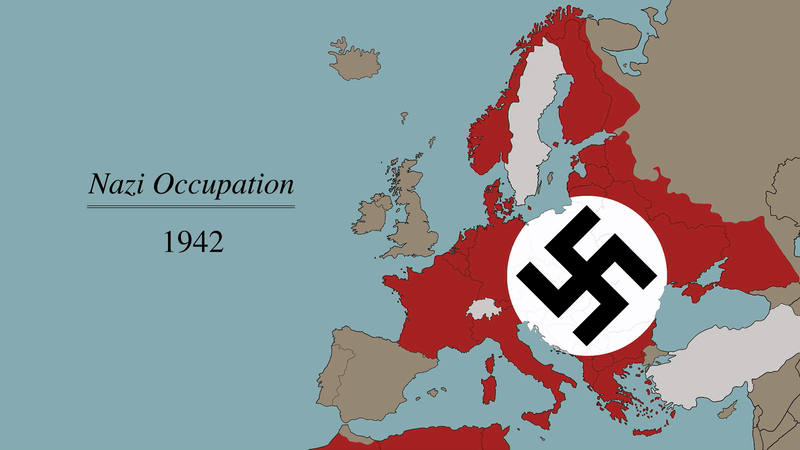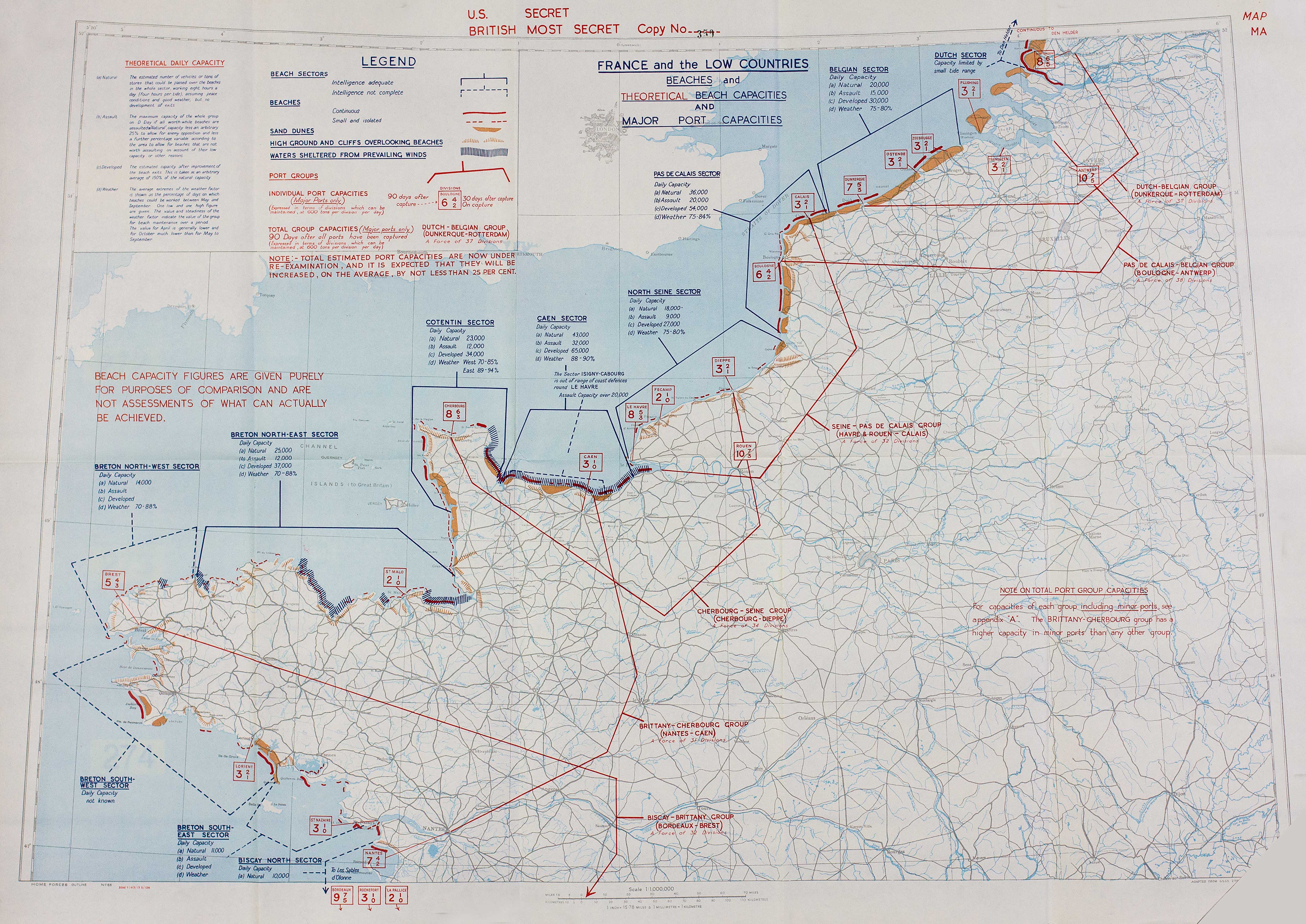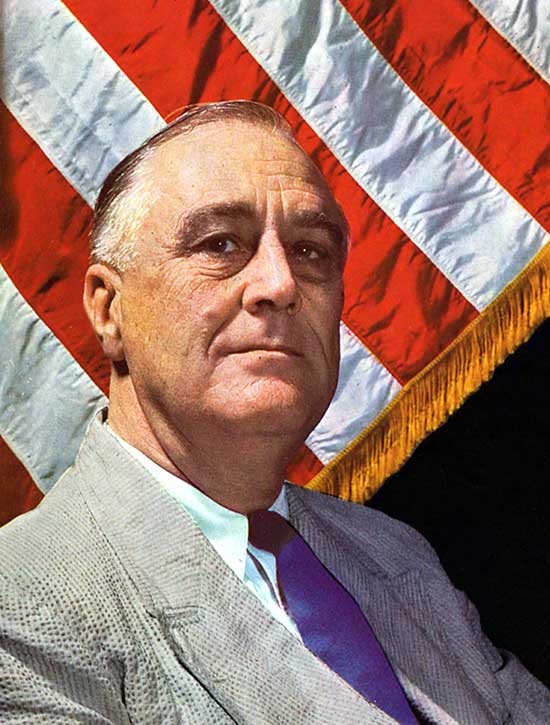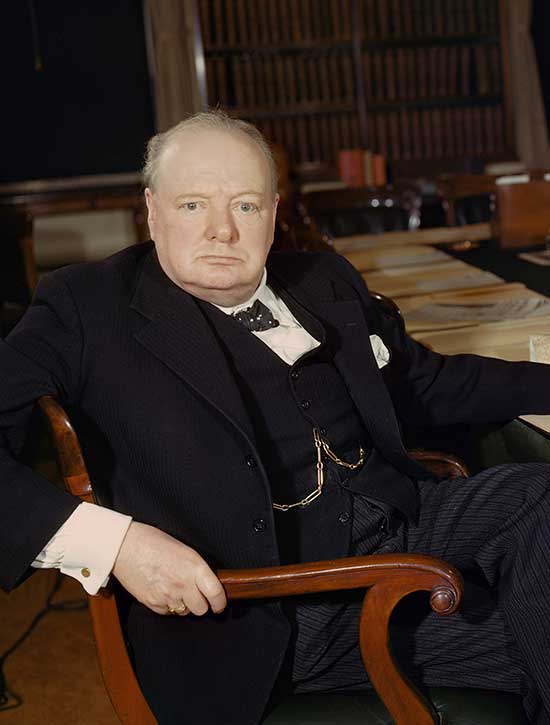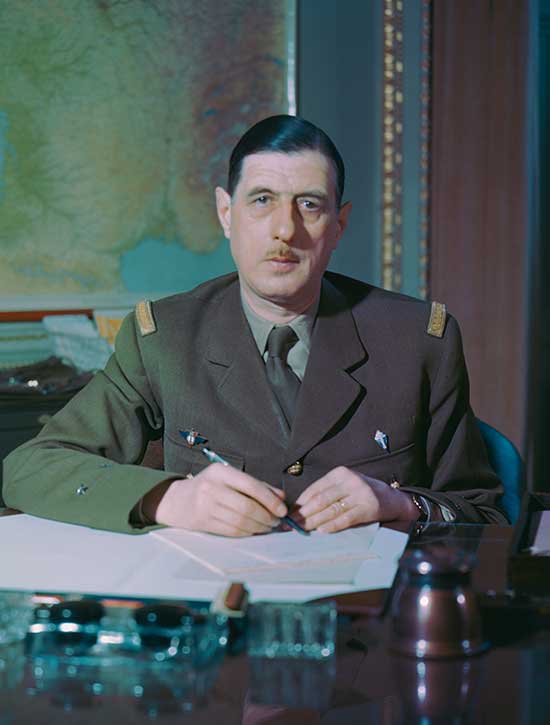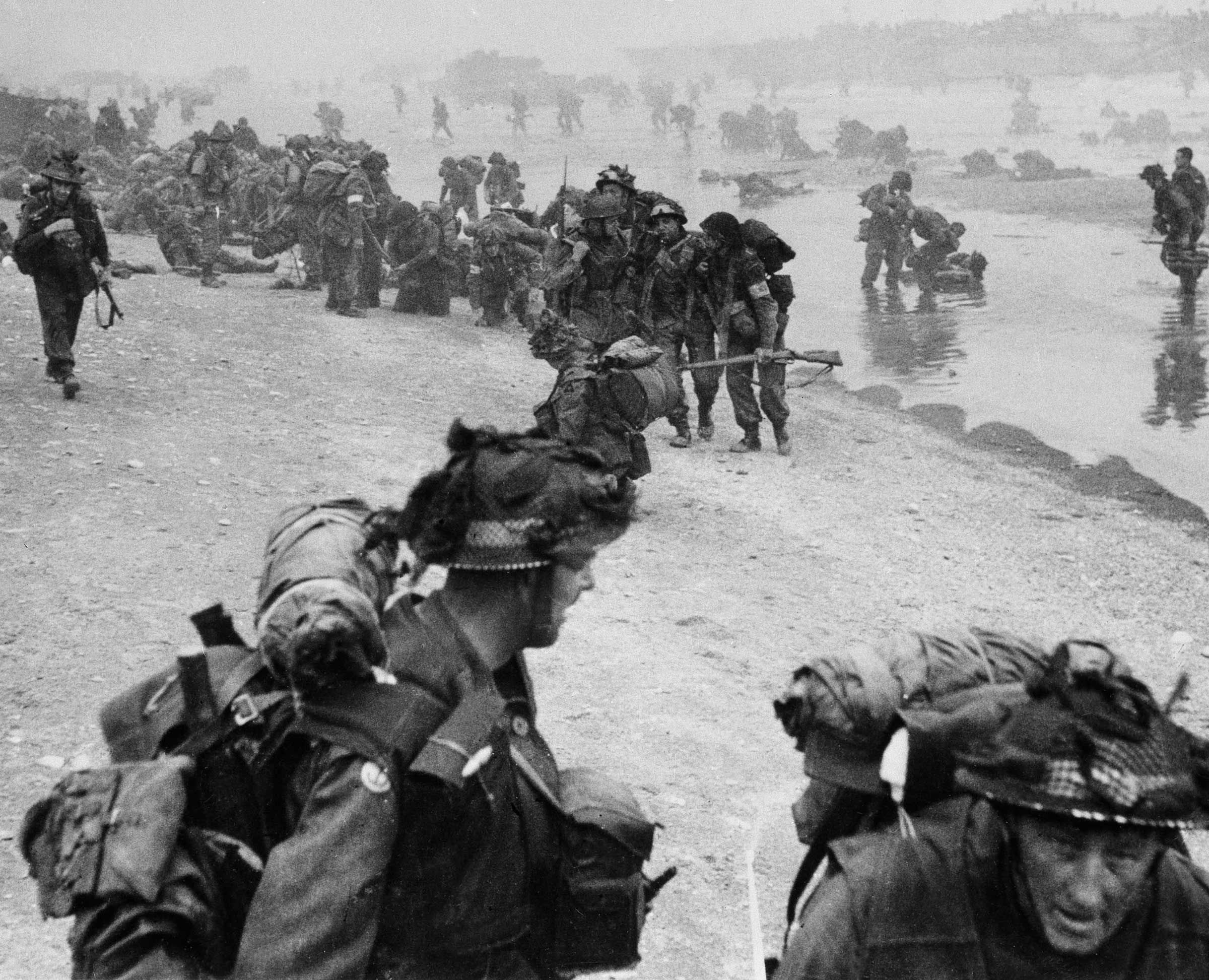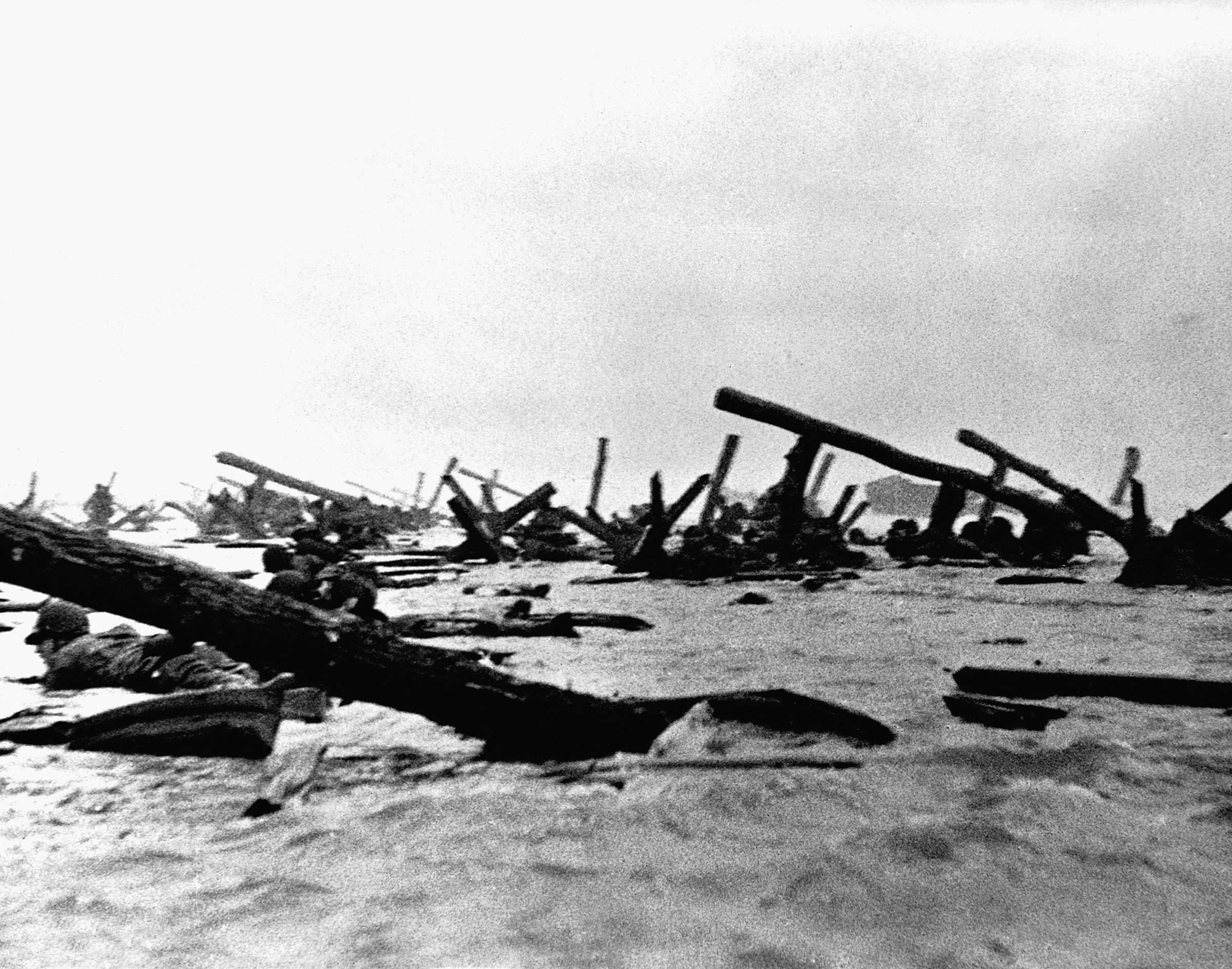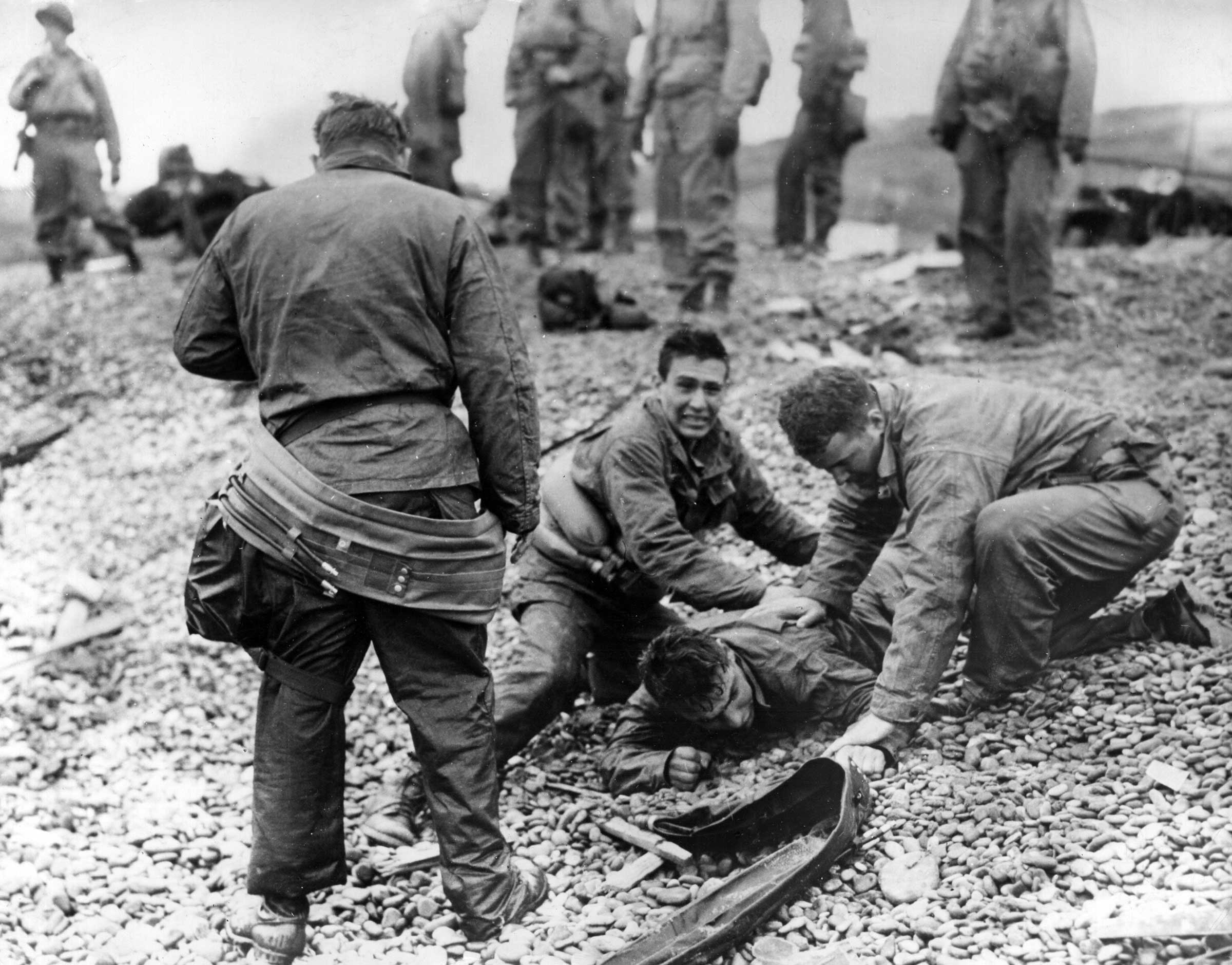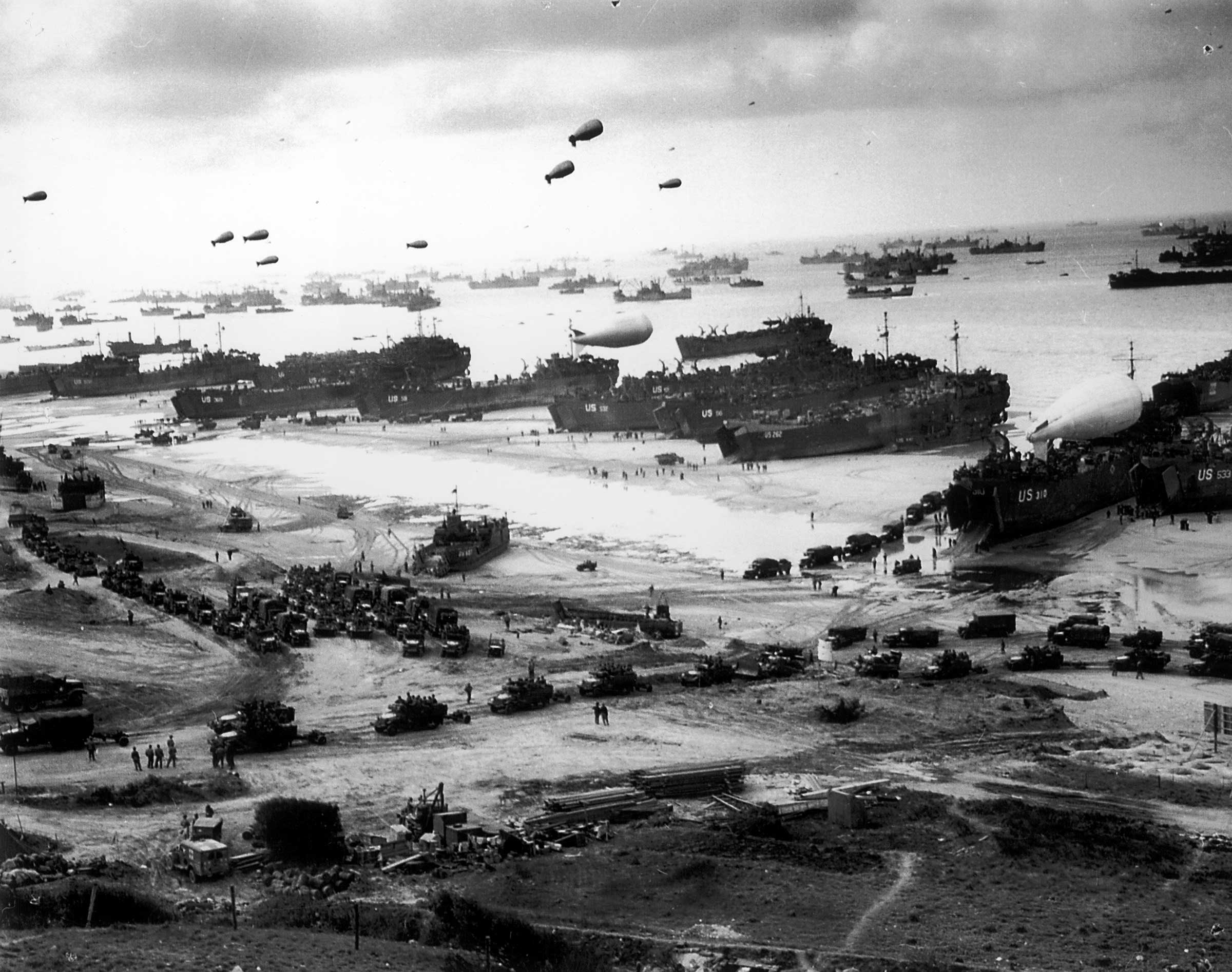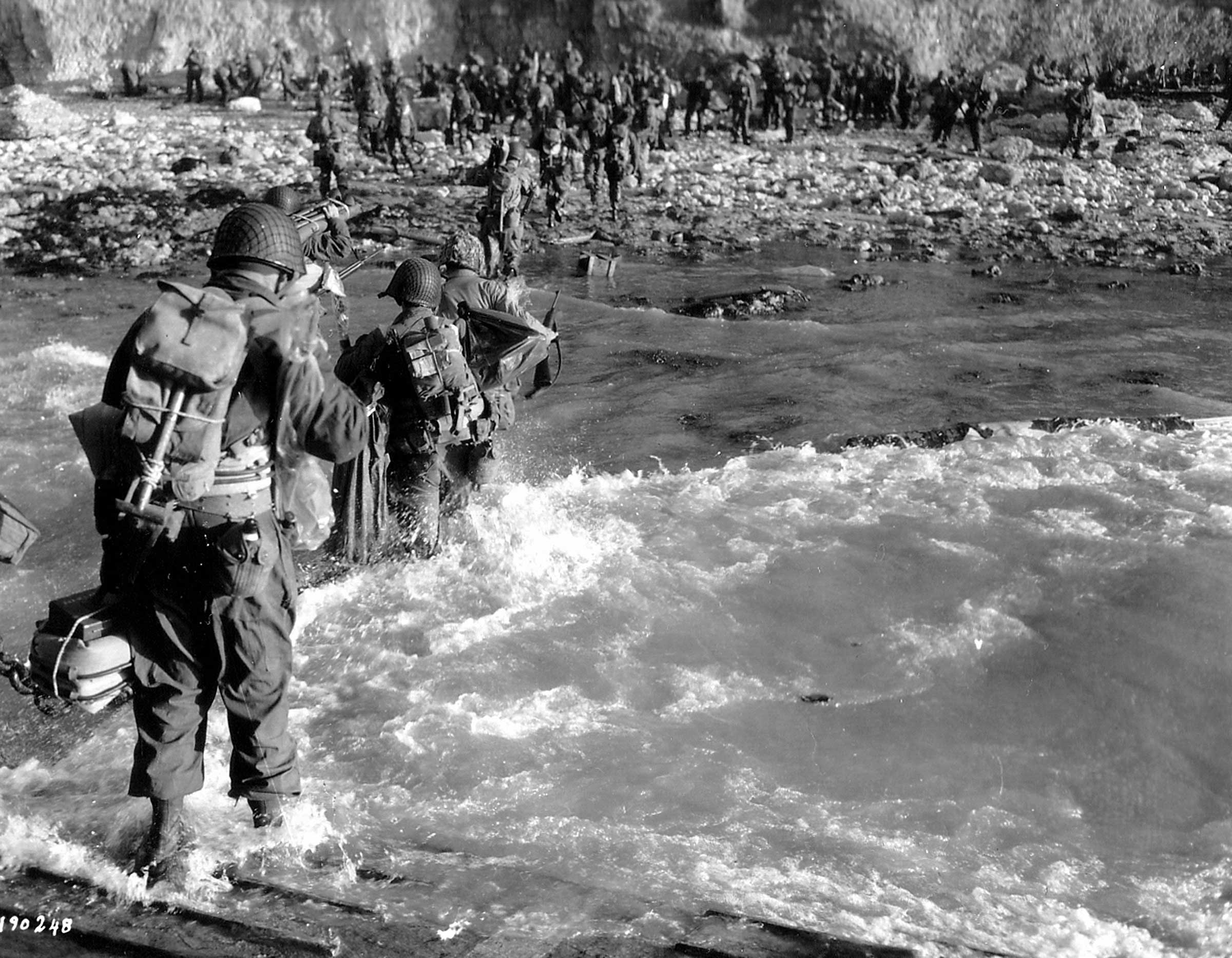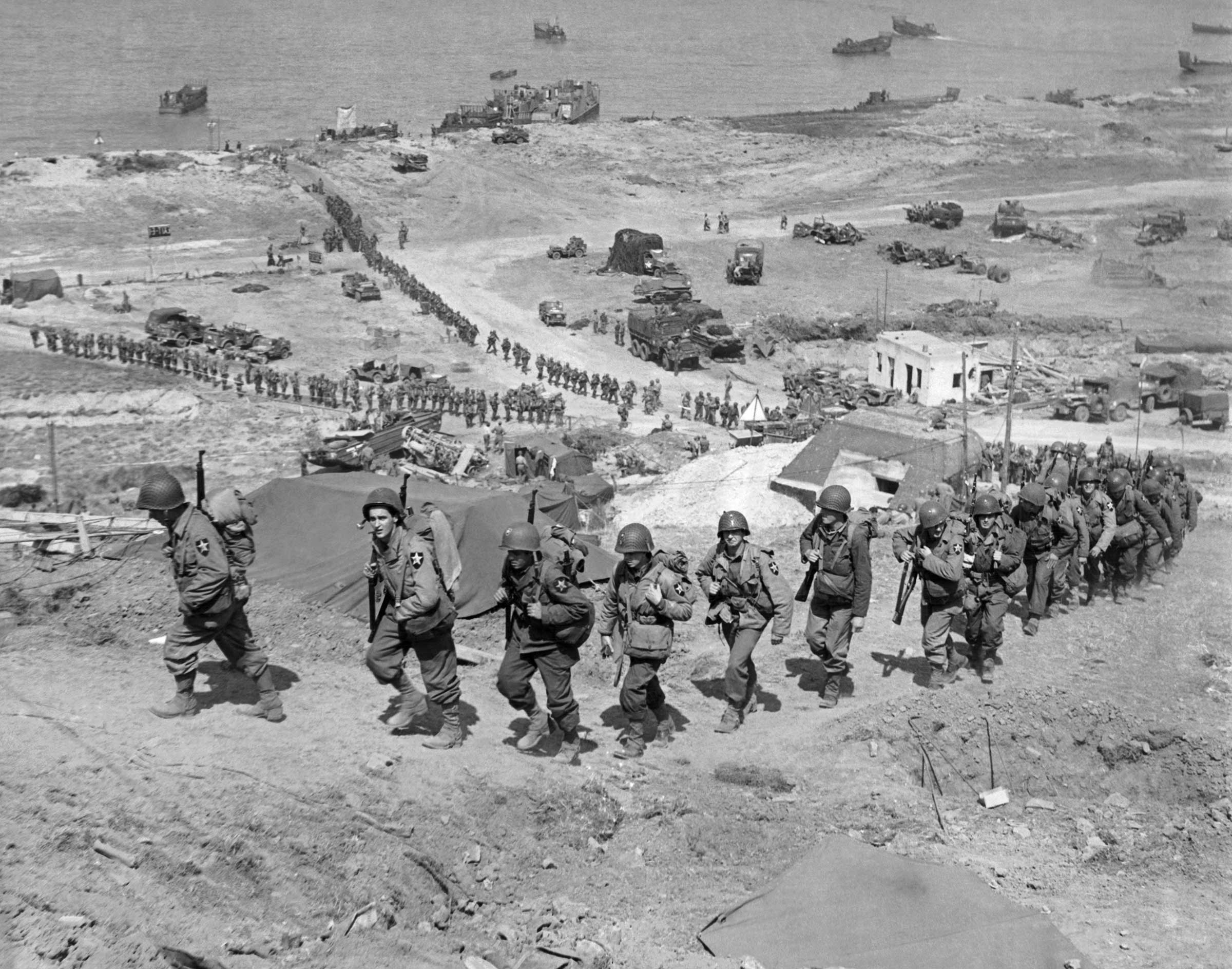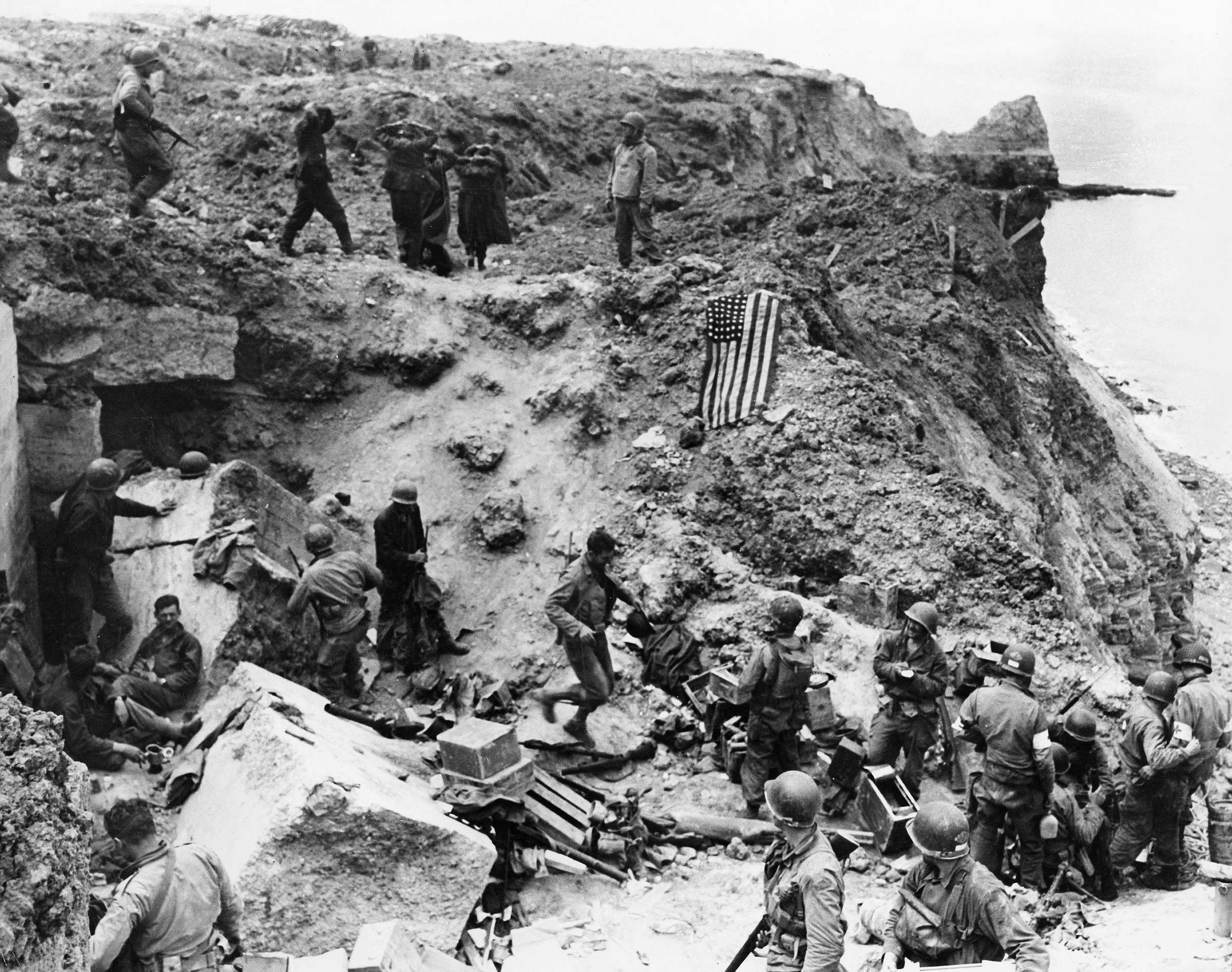Aerial view of American troops and tanks ashore as landing crafts
continue to unload on first day of the invasion of France during
D-Day. (Credit: US Army Air Force/The LIFE Picture Collection/Getty
Images)
The attack plans on each of the five beaches had to be altered on
the fly as landing craft were pushed off course and amphibious
tanks were swamped in the high waves. Even worse, some of the
early morning bombing campaigns had failed to take out German
artillery positions, leaving beaches like Juno and Omaha heavily
defended. U.S. troops at Omaha suffered heavy casualties as they
stormed from their landing craft directly into heavy machine gun
fire. At Juno, the first waves of Canadian troops suffered a
similar fate, cut down en masse by Nazi artillery.
The amphibious landings at Utah, Gold and Sword beaches were also
plagued by high seas and fierce German resistance, but there the
Allied bombing runs and paratrooper missions were more successful,
resulting in fewer casualties and a faster occupation of the beach
and surrounding areas.
